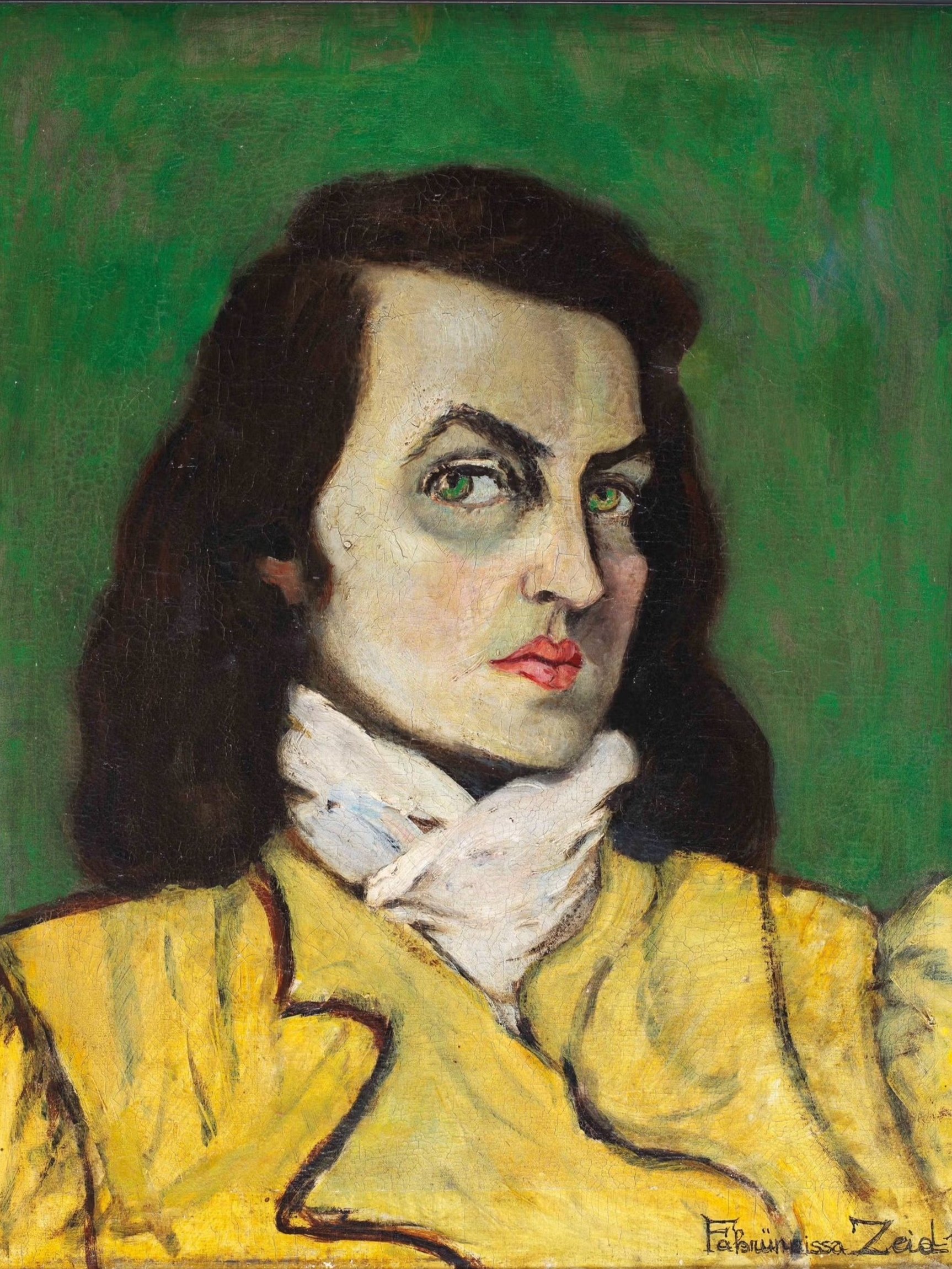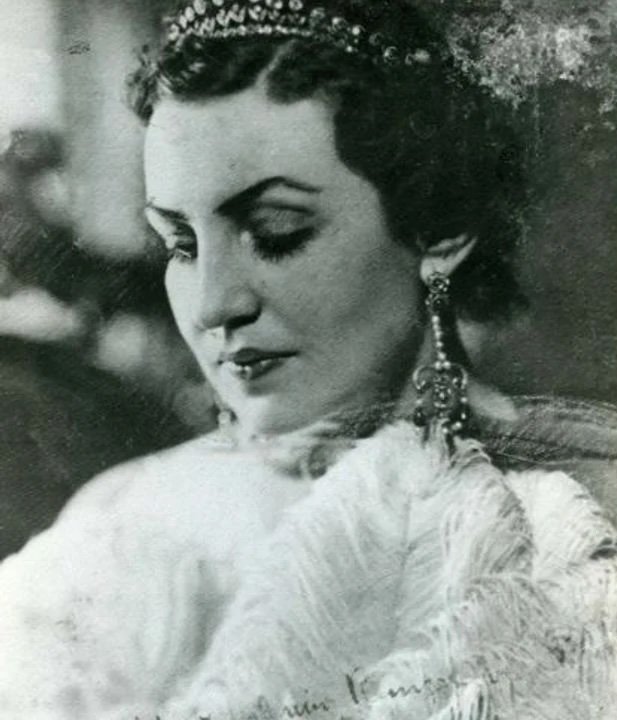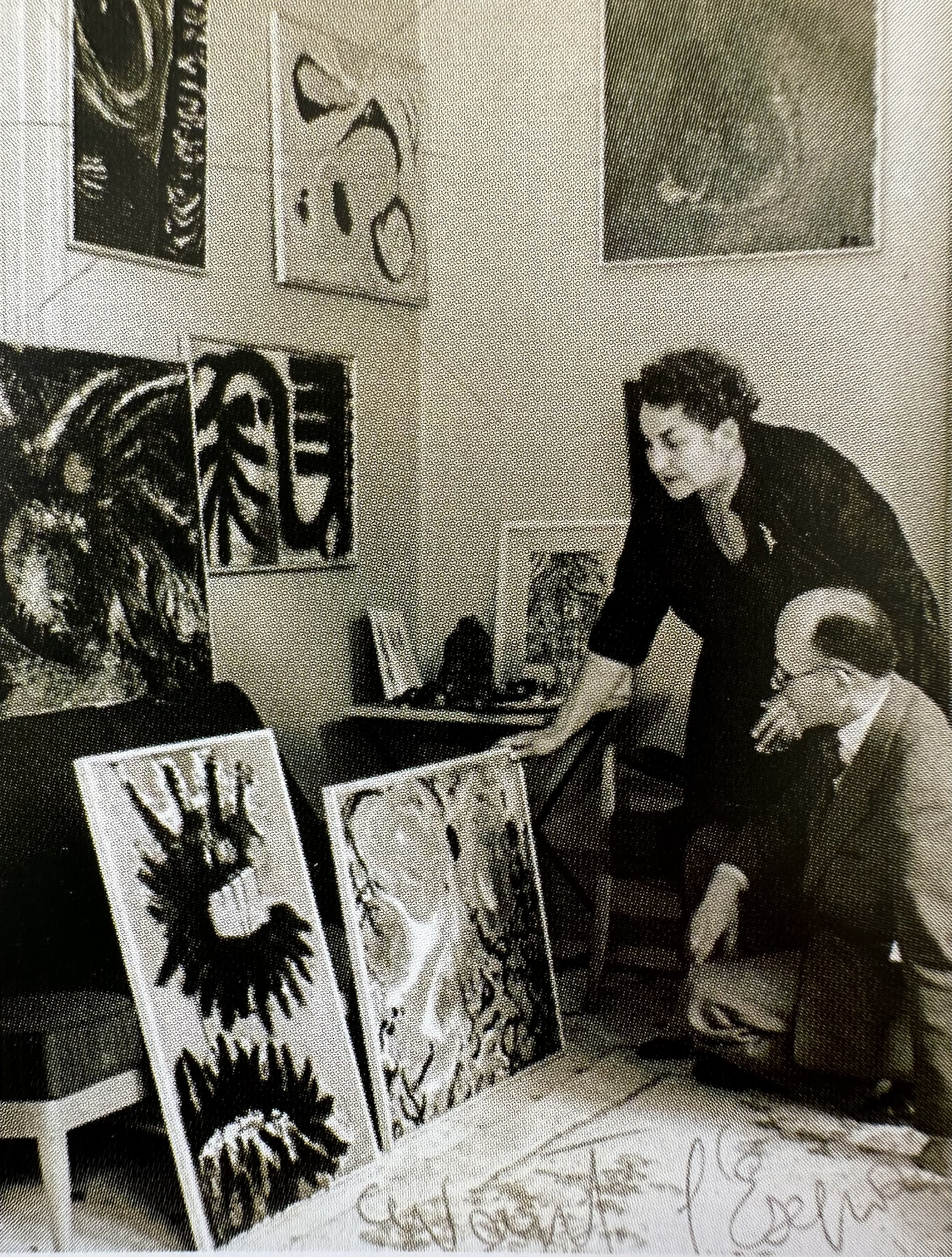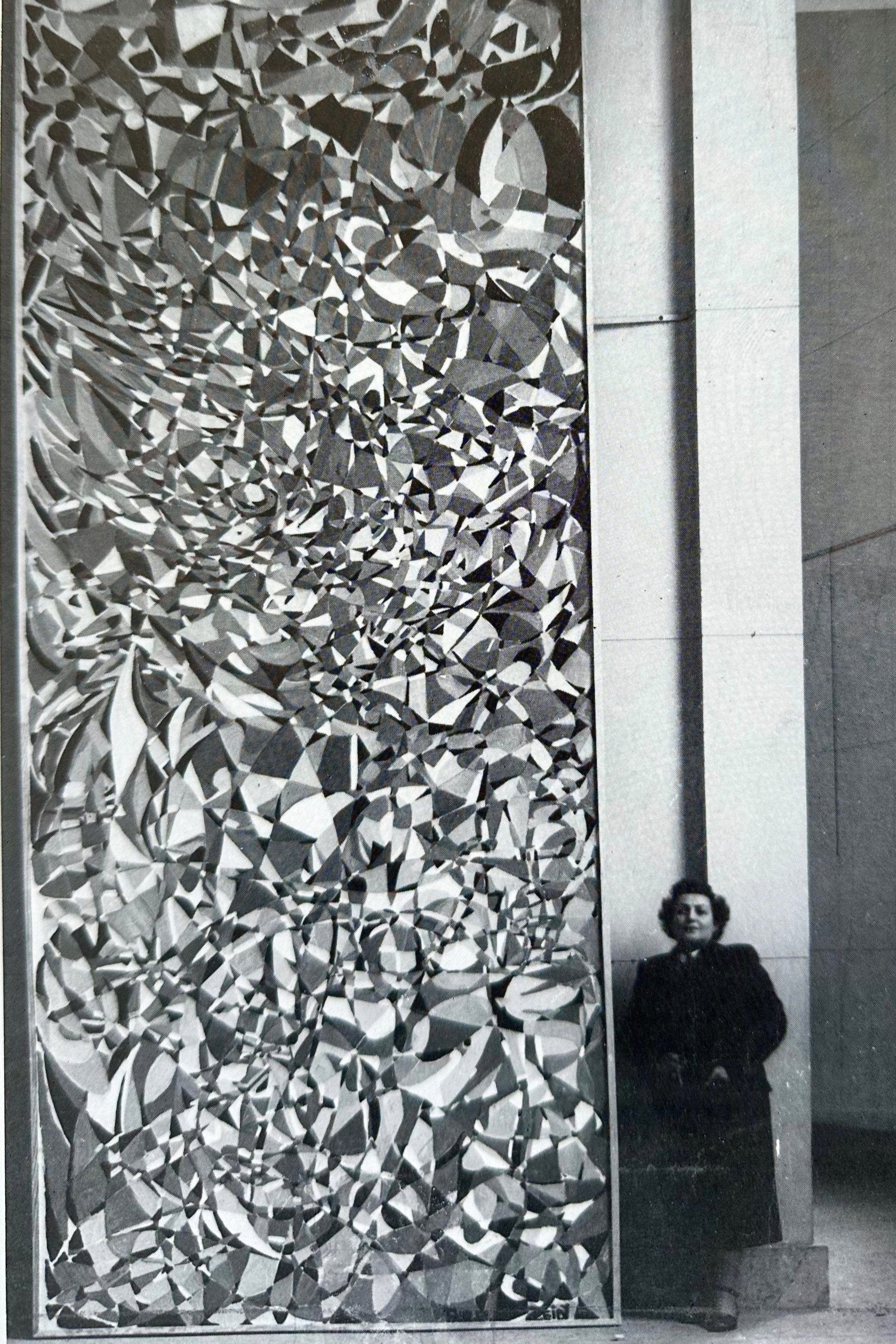
Fahrelnissa Zeid lived and worked in Turkey, Europe and Jordan but felt that as an artist she belonged “neither to a country, nor to a religion. I was born on this earth. I am made of this matter, and everything that relates to it interests me.”
- Dr Adila Laidi-Hanieh
Fahrelnissa Zeid was born Fahrinissa Şakir (later Fahrunissa) on December 6, 1901 into an illustrious and prominent Turkish family, the Ottoman Sakir family, on the island of Buyukada in Istanbul. Her uncle Ahmed Cevat Pasha served as the Grand Vizier of the Ottoman Empire from 1891 to 1895 and her father, Mehmed Sakir Pasha, was a distinguished army general. Fahrelnissa’s elder brother was Cevat Şakir Kabaağaçlı, the famed "Fisherman of Halicarnassus" who brought Bodrum its present renown, while her younger sister was Turkey’s first engraving artist Aliye Berger, and her niece Füreya Koral, the country's first ceramicist.
Zeid began drawing and painting at a young age, at the encouragement of her brother Cevat who recognised her talent. Her earliest known surviving work is a portrait of her grandmother, painted when she was 14. Always ahead of her time and in keeping with her independent spirit, she enrolled at the Academy of Fine Arts for Women in Istanbul in 1919 -one of the very few girls to do so.
In 1920, Fahrelnissa married the novelist İzzet Melih Devrim who took her throughout Europe, visiting museums and exposing her to Western art. Upon her return to Istanbul, she abandoned her academic figurative practice and turned towards modernism and expressionism.
A turning point was her 1928 enrolment at the Académie Ranson, where she studied under cubist painter Roger Bissière. Here Zeid discovered a world of art very different from the 19th century European styles she had previously studied. In 1929 she returned to Istanbul, enrolled at the Academy of Fine Arts and created an art studio at home.
Her marriage to Izzet Melih Devrim ended in divorce; however their union produced three children: the prominent Turkish modern artist Nejad Devrim (1923-1995) and actress Sirin Devrim (1926-2011). Devastatingly, the couple lost their firstborn, Faruk, in infancy.
In 1933, Zeid married Iraqi diplomat Prince Zeid Al-Hussein, a member of the Hashemite Royal Family and took on the role of a diplomat’s wife in Berlin in 1935, while continuing to paint and immersing herself in German culture and society. The following year the couple welcomed a son, Prince Raad bin Zeid. With the outbreak of WWII, the family moved to Baghdad. Even though she painted, Zeid suffered bouts of depression, as she had for most of her life, and took short trips to Paris to recuperate.
In 1941, Zeid settled in Istanbul and the following year joined an experimental and avant-garde circle of Turkish artists known as the 'D Group', which was influenced by Expressionism and Fauvism. They welcomed very few female members. Zeid worked relentlessly and held her first solo exhibition in 1944 at her home in Istanbul. According to Dr Adila Laidi-Hanieh, Fahrelnissa’s biographer, wartime shortages compelled her to work “as much as she could, before art supplies ran out from the city’s stores”.
“ We were considered dangerous innovators and revolutionaries because we insisted on showing our work to the masses, not only to the educated elite, as all painters of the past had done… we attached as much importance to the critical remarks of illiterate workers as to opinions expressed by sophisticated intellectuals. ”
- Fahrelnissa Zeid
In 1946 Prince Zeid was appointed Iraqi ambassador to the UK, and the couple began an important new chapter in London, interspersed with trips to Paris. Time in both cities reinvigorated and motivated Zeid, who enjoyed newfound artistic freedom. She reinvented herself. It was during this period that her work became larger and bolder than it had been before, shifting away from the figurative and completely submerging herself in abstraction. According to Zeid, her two big inspirations were flying in an airplane for the first time, and the abaya clad women of Baghdad.
“Flying by plane transformed me. You see the horizon in front of you, and then you enter the plane, what shock! The world is upside down. A whole city could be held in your hand, the world seen from above. I wanted to fix that in my head.”
— Fahrelnissa Zeid

Zeid became very much part of the vibrant post-war European arts scene and went on to participate in over fifty exhibitions throughout Europe, the USA and the Middle East including at the St. Georges Gallery in London in 1948. She was also the first person from the Middle East to exhibit in a significant New York commercial gallery in 1950.
Zeid began to live part time in Paris where another turning point in her career occurred. In 1949 she met the influential art critic Charles Estienne and became part of the founding exhibition of the Nouvelle Ecole de Paris. Several important exhibitions followed.
“Her work is an amazing juxtaposition which blows to smithereens the aesthetic categories drawn to separate countries, races and cultures.”
Fahrelnissa with one of her masterpieces, “Towards a Sky”, 1953.
Zeid was the first female artist of any nationality to have a solo exhibition at London’s prestigious modernist showcase Institute of Contemporary Arts in 1956.
In 1958 Zeid faced personal tragedy with the assassination of the Hashemite royal family in Iraq. After a brief break, Zeid took refuge in her work, as she frequently did when facing personal tragedies, and experimented with mixed media in their new rented apartment near Holland Park. Her husband, Prince Zeid, who was heartbroken, often doodled alongside her. New to the culinary world, she became inspired to create art out of chicken and turkey bones by painting them and fashioning them into sculptures.
Fahrelnissa Zeid welcoming Queen Elizabeth to the opening of her exhibition in London, 1948.
In the following years Zeid divided her time between London, Paris and her summer home in Ischia in Italy- the latter increasingly becoming her refuge. The 1960s were a period of both renewal and retrospection for Zeid who returned to her portraiture alongside her abstract work. In 1964 two large-scale homecoming retrospectives were held in Istanbul and Ankara with the help of her daughter Şirin Devrim. She also further developed her chicken bone art form by inserting them in resin, calling the light reflecting creations “Paleokrystalos”, and by experimenting with mounting them on different mediums.
The death of Zeid’s husband in 1970 left her immensely heartbroken, often expressing this in large portraits of Prince Zeid. She continued to live and work in Paris for a few more years before deciding to move to Amman, Jordan to be near her son and his family. Zeid went on to set up an informal art school in Amman where she taught and mentored many art students. It was during this time that Fahrelnissa painted many portraits of friends and family. She held several exhibitions in Amman and in Europe, and was awarded the honored with a medal from King Hussein, and lauded as 'The Jordanian Star”.
Fahrelnissa Zeid lived in Amman until her death in 1991 and had continued to create till her final days.
An internationally renowned artist, her works continue to take centre stage at major biennales, fairs, auctions and exhibitions around the world, including at a major retrospective at Tate Modern in 2017.
In 2019, Google commemorated Fahrelnissa’s 118th birthday with a Google Doodle.


























